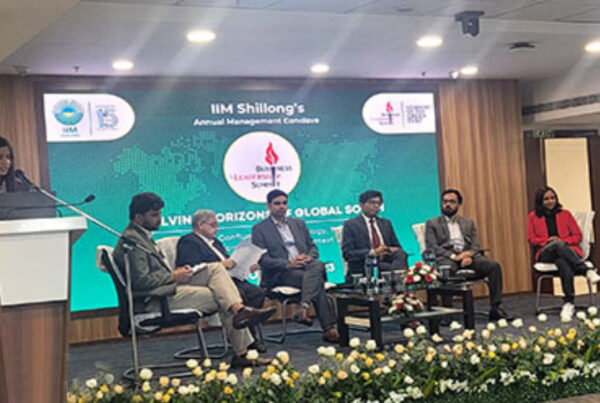Given that all countries are determined to cut vehicular pollution and are progressing in that direction, where does India stand in this regard is an interesting question.
Both fuel cell types have their sets of advantages and disadvantages. But for developing economies, the adoption of either type of vehicles is not just a matter of innovation, it has a lot to do with affordability, level of economic development, feasibility of switching to non-fossil fuels, and other macro factors, including government support.
The switch to emission-free vehicles is no doubt a necessity, in fact a top priority for most governments. That said, are nations on the same footing to adopt?
There are several challenges for developing economies in terms of adoption of EVs in the first place. Absence of a reliable infrastructure and favorable government policies, or investment support are the major obstacles.
Countries such as India, Indonesia and Brazil have some kind of energy infrastructure to support two-wheeler electric vehicles. However, they lack the resources for a full-scale switch to electric-run transportation.
India, for instance, has set an ambitious target to achieve carbon neutrality by 2070. As the fourth largest polluter in terms of CO2 emissions, after China, the EU and the US, the switch is going to be anything but easy.
What is required is a game changer, according to an article published in The Times of India in November 2022, this will mean overhauling the source of energy for both industrial and domestic consumption. This is easier said than done, considering that India still meets 50% of electricity demand from coal.
Will hydrogen power India’s fuel transition?
Fuel transition is a make-or-break decision for the economy. The Government of India (GoI) is heavily tilted in favor of hydrogen over electricity for cars and heavy vehicles. This has invited a lot of perspectives and opinions.
The government has its reasons. It is looking to not just be self-sufficient in green hydrogen, but also position India as the largest exporter in the long term.
Where do electric or lithium-ion batteries score?
Green hydrogen is produced via electrolysis. Electrical energy from renewable sources is used to split water into its components, oxygen and hydrogen. The hydrogen thus generated is supplied to pumps for fueling vehicles.
Simple as this sounds, it is not. Mainly because massive quantities of hydrogen are required for its use as fuel. This means an equally enormous amount of energy is needed, given the scale of electrolysis! Obviously, this will translate into higher cost for the vehicle.
Moreover, it is like a repeat process. The green hydrogen is again used to produce electricity to power engines in vehicles. Because of this indirect transfer of energy, the chances of leakage are high. Hydrogen cars are estimated to have energy efficiency of a little above 30%.
So why not use electricity directly, as some proponents of EV manufacturers argue? Eliminating the redundant step will bring efficiency. In EVs, electricity is directly transferred to the engines to power them. This minimizes the scope for leakage. Most estimates put the efficiency of EVs at 75-80%.
Fair point.
However, efficiency is not just contingent on removing an extra step.
The case for green hydrogen in India: The efficiencies
· India’s stand on green hydrogen is to see it implemented in cars and in heavy vehicles. Reason is that hydrogen is more suitable for heavy vehicles compared to electric batteries.
· Heavy vehicles such as trucks use compressed hydrogen that is not heavy like battery cells; plus, it occupies less space. Ergonomically and weight-wise, the use of hydrogen will benefit the vehicles. Also, it is easy to refuel hydrogen, like regular fossil fuels. Recharging batteries is a rather time-consuming and tedious process.
· There is also an economic cost to recharging. It means delay in the transportation of goods, as well as delivery of related services. This is bound to have a major economic impact. Plus, heavy vehicles in a long queue will create space-related issues, creating congestion.
· Hydrogen is an attractive option when we consider heavy industries such as steel, chemical or cement that are the topmost emitters of CO2. It is nearly impossible to decarbonize all processes in these industries and move them completely to electricity. However, several processes require extremely high heat that cannot be produced by electricity alone. Here, replacing electricity from fossil fuels with that produced by hydrogen seems to be a sound alternative.
That said, the flip side is that green hydrogen is expensive. NITI Aayog, the public policy think tank of the Indian government, lists several components in the cost of green hydrogen: electrolyzer-related, operating, T&D costs, GST on goods and services in states, etc.
Measures to lower cost
· The GOI has taken several measures to lower the cost of green hydrogen, which stands at INR300-400 per kg currently. It plans to build an electrolyzer capacity of 60-100 gigawatts. To encourage the production of low-cost electrolyzers, the government has introduced a production-linked incentive (PLI) scheme.
· It also plans to introduce mandatory rules and regulations for heavy industries and other segments, such as fertilizer plants, or petroleum refineries, to move to green hydrogen. This is expected to generate significant demand, which would bring down costs.
· Several tax and infrastructure setup-related benefits have been offered. Tax incentives include concessions on rates for green electricity, waiver of inter-state transmission fees/charges, and allocation of land at mega manufacturing zones and renewable energy parks for promoting the production of green hydrogen and green ammonia.
· The GoI launched the National Hydrogen Mission in 2021 to promote the production of green hydrogen by 5 million metric tonnes, among other steps to lower carbon emissions.
· Recently, it introduced the National Green Hydrogen Mission with an outlay of INR17,490 crores. The aim is to make India self-sufficient in meeting its energy requirements. The initiative is expected to facilitate the decarbonization of the industrial sector, create employment opportunities, boost technological innovations, and create export opportunities for green hydrogen.
· The cost of green hydrogen is very high today. However, as stated in a January 2023 article by FutureFuels, an online digital content platform dedicated to fuels, the levelized cost of electricity (LCOE) for renewable energy sources, solar and wind, is competitive in India, while the country is a net importer of natural gas.
· The country enjoys an edge in terms of low-cost of renewable electricity. This, coupled with falling electrolyzer prices, can make green hydrogen an economically viable option compared to fossil-based fuels.
· As per a report by the NITI Aayog, the government needs to focus on creating long- and short-term policies to maintain the cost competitiveness of hydrogen vis-à-vis other alternatives; facilitate market development for hydrogen by identifying industrial clusters; leverage opportunities around R&D and manufacturing in the domain to help the industry scale up; and prospect for the export of green hydrogen and hydrogen-embedded low carbon products, such as green ammonia or green steel.
Budget 2023: Implications for EVs and green hydrogen
The Union Budget for 2023-24 is aligned to India’s vision to become a net zero economy by 2070. The country is approaching the issue judiciously. Despite the low-cost advantage India may have for green hydrogen, the budget makes allocation and/or concession for both green hydrogen and EV batteries.
To boost the adoption of clean automotives, custom duty exemptions have been given to capital goods and machinery required in the production of lithium-ion batteries. Also, the subsidy on lithium-ion batteries has been extended for a year. The aim is to increase the competitiveness of electric vehicles in the market and promote electric mobility.
Also, in line with the country’s mission to become a low carbon economy, an outlay of INR19,700 crores have been earmarked for the National Green Hydrogen Mission.
The overall objective is to fast-track India’s progression to net zero status by 2070.
To conclude
Transition to clean energy is imperative and no longer just an option. Amid the growing environment consciousness and the need to reduce the carbon footprint, governments and the corporate sector are increasingly working to address the requirement.
India is no exception. The country is focusing on green hydrogen with the conviction that this is where its future lies. There are significant opportunities in this, but so are the challenges. The success of the effort will lie in effective collaboration between the country’s government and private sector companies. It will require a well-crafted push of policies for both demand and supply to make the switch viable.
Overdependence on any one cell type should be avoided. Creating a hybrid environment could be considered, but this cannot happen without factoring in the economic development of India, its socio-economic peculiarities, and a host of other macroeconomic factors.
According to another article in The Times of India, published on January 5, 2023, India definitely has a low-cost advantage in green hydrogen. The cost is expected to slide to a quarter of the global levels. This would position the country as a key exporter. However, the switch will take time. No transition can be or should be executed without doing the due diligence.
For more on Research, Analytics & Advisory, connect with Shubham Chatterjee, Vice President at Avalon Global Research.




